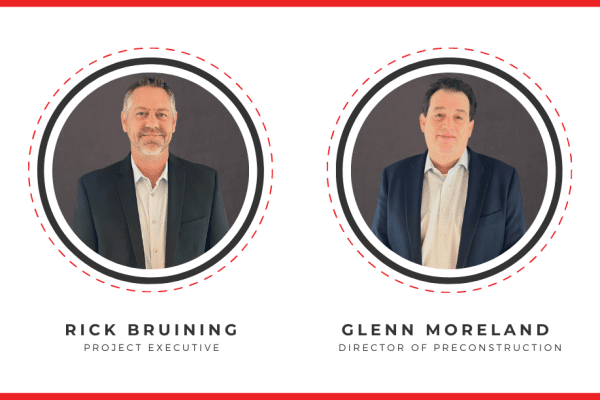As part of BELL Construction’s commitment to serving as a trusted advisor to our clients and industry partners, we share insights from our team and other industry experts each quarter that may help you plan more effectively for your projects.
Building against aggressive timelines requires staying current on time-saving opportunities vital for project success and client satisfaction. Prefabricated detention cells are an efficient alternative used in detention facility construction. In our latest blog, Rick Bruining, Project Executive and Director of Preconstruction Glenn Moreland, share knowledge to help you determine if prefab cells are a good solution for your next detention facility project.
What are the benefits of prefabricated detention cells, and when is it best to use them?
Rick Bruining: There are many benefits of prefabrication in the construction process, especially the detention cell component of the project. Benefits include the following:
- Saving time on the construction schedule. While the building is being erected, the cells are being fabricated at the manufacturer’s plant and include all interior finishes, furniture and fixtures.
- Cost savings. Based on the size and scope of the project, prefabricated cells can reduce the overall project cost.
- Increasing quality of construction. Since the cell module and its interior finishes are being built by factory-trained professionals who build cells for a living, the quality is much better than if the work was built and finished at the project by local trades.
Glenn Moreland: Prefabricated detention cells are optimal for meeting tight deadlines during justice facility construction. Analyze prefab cells during the conceptual design phase to determine the cell type that works best for the project as it relates to the availability of labor for installation. Cost, structure type and time frames typically govern most project-related decisions. While there are costs associated with prefab detention cells, they can add significant value.
Weighing detention cell types and materials: There are many material options for cell construction. Below are the major benefits and challenges of the most frequently used cell types including standard, built-on-site cells and prefab cells.
- Concrete masonry unit (CMU) cells: CMU cells are the standard when it comes to detention cells. CMU cells keep materials costs low and allow for design flexibility. However, they require substantial on-site labor, their heavy weight impacts the superstructure type and cost, and they require that window and door frames must be onsite before cell construction can proceed.
- Truss-reinforced steel panels: Truss-reinforced steel paneled cells are a space-saving and lightweight approach and provide the most flexibility. However, the panels do not support the superstructure and materials costs are higher than CMU.
- Modular steel type cells and modular precast cells: Both modular steel type cells and modular precast cells are designed early and delivered to the job site, which speeds up the construction process and reduces on-site labor. The installation can be completed inside an enclosed building, eliminating weather setbacks. While these types of cells are relatively light and reduce weight on the building structure, costs are generally higher and there are a limited number of manufacturers and installers to complete the job.
How do prefab cells help improve the quality of construction?
Rick Bruining: The cells are coordinated and fabricated by professionals who only build cells for a living. Their process has been perfected over the years, and the quality of the cell and interior finishes are much better than if the cells were hand-built by local trades who may be working on a cell for the first time. Premanufactured cells go through a rigorous inspection process prior to leaving the plant. This ensures they meet all quality requirements before arriving at the jobsite.
Glenn Moreland: Production of individual prefab cells can be completed during foundational construction, saving time and reducing the need for sequential scheduling. Because the cells are manufactured in a controlled facility, quality is maintained.
The use of prefab cells can greatly benefit the construction, but only when planned properly. The prefab cell must be used as part of the overall building superstructure. If not, the client will pay for both cell cost and building structure cost. We recommend planning, designing and manufacturing cells early in the process to expedite the process.
How does BELL’s experience with pre-fab cells make a difference?
Rick Bruining: The BELL team has experience with all types of cell construction, including CMU, detention wall panels, prefabricated concrete and steel cells. Our team has been involved in over 200 jail projects, of which 40 were built with prefabricated cells. There is an art to coordinating projects with premanufactured cells, and with the experience and relationships BELL has with prefabricated cell manufacturers and its delivery method, we have become one of the country’s leading contractors to manage this project type.
Glenn Moreland: Determining the type of cell construction starts in the planning phase. BELL considers the best type of cell for each project’s distinct needs, prefabricated or not.
While the initial cost of some prefabricated cells can be expensive, they should be evaluated to determine if they will save construction time and minimize onsite labor. Making the right cell type decision upfront will help the owner, contractors and subcontractors align on project costs and timeframe and prevent the need for redesign down the road.
Have questions about where to begin on a prefabricated cell project? Please contact us.

